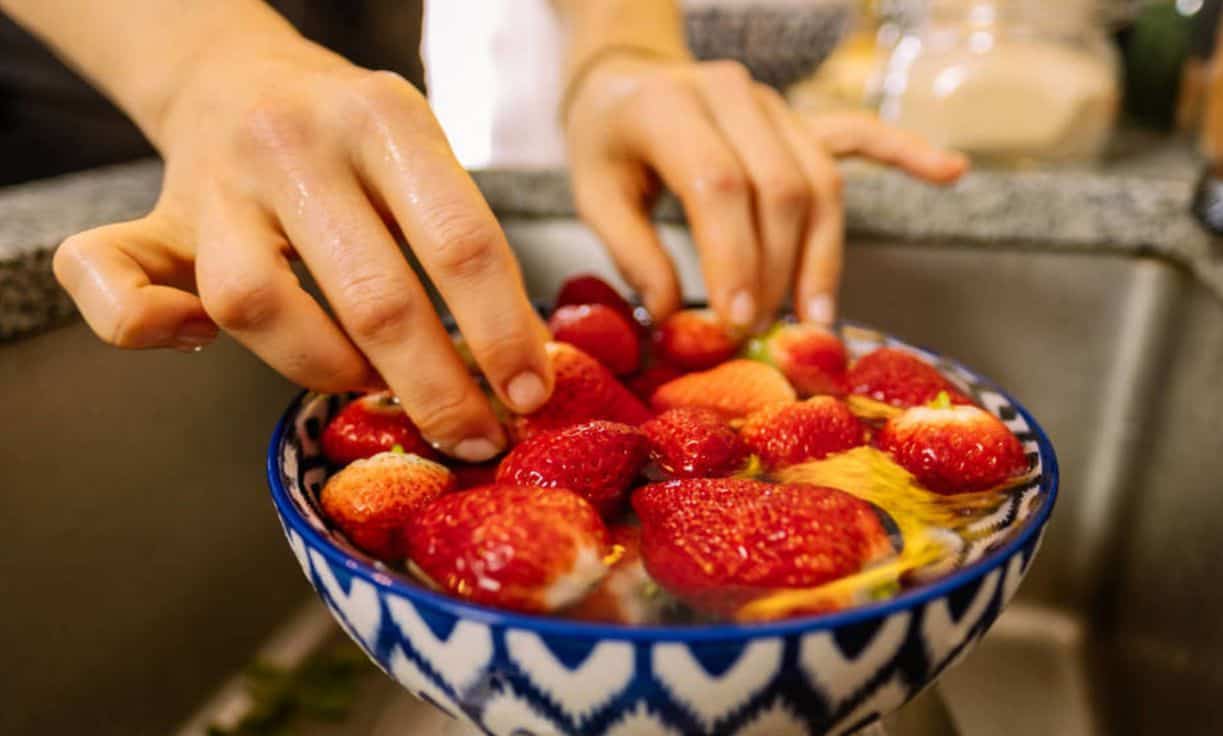Washing fruits and vegetables under running water is a good option, but there seems to be a better way. This is ensured by a study from the University of Massachusetts
Baking soda and vinegar can make very good crumbs by collaborating on a common cause: removing remaining pesticide residues on the skin of fruits and vegetables. The truth is that both, with greater or lesser fortune, are employed in many households to clean up any trace of such substance in food. But are they really effective? Apparently, this fame is not unfounded, in the light of a recent study.
- Scientists in Fear of This New Predator From Red Sea Eating Native Species in Mediterranean
- Does This Mean We Stopped Being Animal and Started Being Human Due to ‘Copy Paste’ Errors?
- The One Lifestyle Choice That Could Reduce Your Heart Disease Risk By More Than 22%
- Aging: This Is What Happens Inside Your Body Right After Exercise
- Immune-Boosting Drink that Mimics Fasting to Reduce Fat – Scientists ‘Were Surprised’ By New Findings
It is true that many consumers are very scrupulous and have already assumed this habit before eating food. While others simply place the fruit under running water to be safe from any pesticide residue.
However, although this guideline is good, the cleaning process requires a little more care. A good example of this is the results of research focused on analyzing the effectiveness of homemade preparations to eliminate the residues of pesticides used during the cultivation of fruit and vegetables.
We must bear in mind that, according to the United States Department of Agriculture, 85% of the products analyzed in 2015 had traces of pesticides. Although it is true that in all the cases detected it was within the thresholds considered safe.
The best cleaning method
However, the research that we echo, and that has been carried out by a group of researchers from the University of Massachusetts Amherst, shows that a solution with sodium bicarbonate could be the most effective home remedy for this need. Specifically, the study focused on three cleaning mechanisms: Clorox bleach, tap water, and baking soda. The main objective was to elucidate its effectiveness for the elimination of possible pesticide residues. The result revealed an unquestionable winner: baking soda. This is because, apparently, pesticides break down more quickly in this compound, which facilitates its physical elimination by washing. We only need to mix a teaspoon of baking soda, approximately, in two cups of water.
For its part, bleach serves to eliminate possible bacteria and germs that may have proliferated on the skin. Thus, in countries like the United States, the Environmental Protection Agency (EPA) requires apple growers to soak the fruit for two minutes in bleach mixed with water, in order to eradicate bacteria and other substances. organic. However, this method does not work with pesticides.
In any case, the sodium bicarbonate also does not act to eliminate the residues that have penetrated the skin of the apple. Therefore, its effectiveness is limited to the skin of the fruits, it does not go beyond this. This study, which focused on the apple, does not include another cleaning method that is very popular in the home: vinegar. In addition, it only stuck to the presence of two pesticides and overlooked the large number of pesticide residues that can also be found on the surface of this product.
Under the tap and with a brush
On the other hand, tap water is not a bad option either. This is what the experts of the National Pesticide Information Center (NCPI) consider it, which was born from the cooperation agreement between Oregon State University (OSU) and the United States Environmental Protection Agency (EPA). From this body, they emphasize that, when the food arrives at the grocery store, the traces of any type of pesticide are generally well below the legal limit.
- Scientists in Fear of This New Predator From Red Sea Eating Native Species in Mediterranean
- Does This Mean We Stopped Being Animal and Started Being Human Due to ‘Copy Paste’ Errors?
- The One Lifestyle Choice That Could Reduce Your Heart Disease Risk By More Than 22%
- Aging: This Is What Happens Inside Your Body Right After Exercise
- Immune-Boosting Drink that Mimics Fasting to Reduce Fat – Scientists ‘Were Surprised’ By New Findings
Even so, they recommend us to put into practice a simple trick that reduces the levels a little more. According to them, washing fruit or vegetables under running water helps to eliminate more residues than placing them in a container of water. However, there are those who continue to be determined to soak food in a bowl, believing that this will achieve better results. In addition to running water, we can reinforce cleaning with brushing.
“Peeling or brushing foods like potatoes with a firm bristle or strand brush, or scrubbing soft fruits like peaches under running water is the best way to remove these residues. However, pesticide residues stick better to fruits that have waxy skins or soft skins. Furthermore, if the food was treated with paraffin or wax, it is possible that some pesticide residues are trapped under these substances”, the agency explained on their website.
With regard to soaps or detergents designed to remove these remains, experts say that they have not been proven to be more effective than water alone: “This is because water is very effective in removing some superficial residues. It should be noted that no washing method is 100% effective as some fruits and vegetables have pores. Thus, cleaning soaps or bleach can become trapped or absorbed by the pores, in such a way that it is very difficult for them to come off once they have been applied.”
